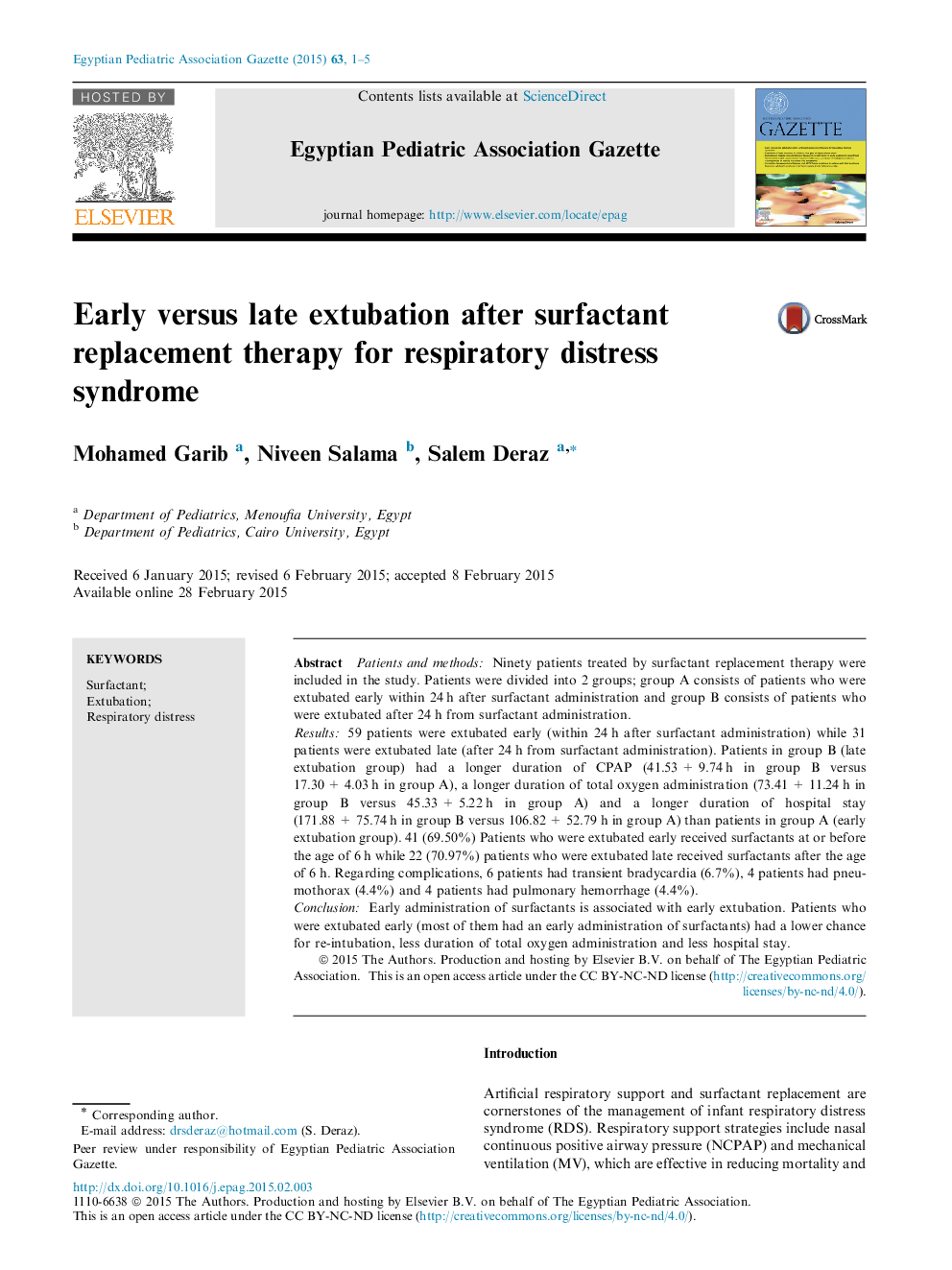| Article ID | Journal | Published Year | Pages | File Type |
|---|---|---|---|---|
| 4153577 | Egyptian Pediatric Association Gazette | 2015 | 5 Pages |
Patients and methodsNinety patients treated by surfactant replacement therapy were included in the study. Patients were divided into 2 groups; group A consists of patients who were extubated early within 24 h after surfactant administration and group B consists of patients who were extubated after 24 h from surfactant administration.Results59 patients were extubated early (within 24 h after surfactant administration) while 31 patients were extubated late (after 24 h from surfactant administration). Patients in group B (late extubation group) had a longer duration of CPAP (41.53 + 9.74 h in group B versus 17.30 + 4.03 h in group A), a longer duration of total oxygen administration (73.41 + 11.24 h in group B versus 45.33 + 5.22 h in group A) and a longer duration of hospital stay (171.88 + 75.74 h in group B versus 106.82 + 52.79 h in group A) than patients in group A (early extubation group). 41 (69.50%) Patients who were extubated early received surfactants at or before the age of 6 h while 22 (70.97%) patients who were extubated late received surfactants after the age of 6 h. Regarding complications, 6 patients had transient bradycardia (6.7%), 4 patients had pneumothorax (4.4%) and 4 patients had pulmonary hemorrhage (4.4%).ConclusionEarly administration of surfactants is associated with early extubation. Patients who were extubated early (most of them had an early administration of surfactants) had a lower chance for re-intubation, less duration of total oxygen administration and less hospital stay.
